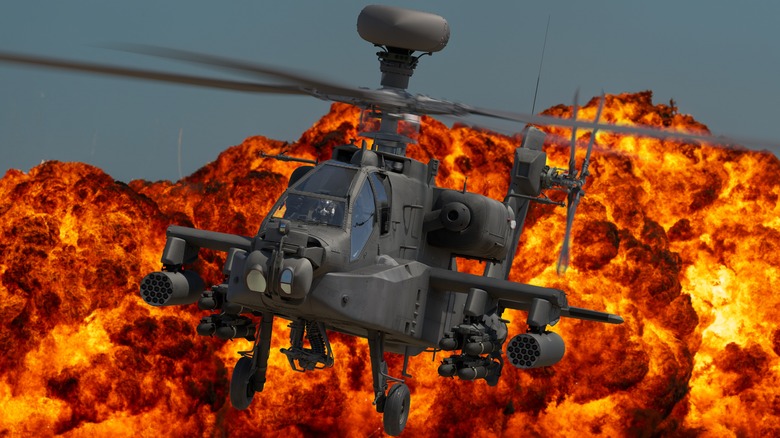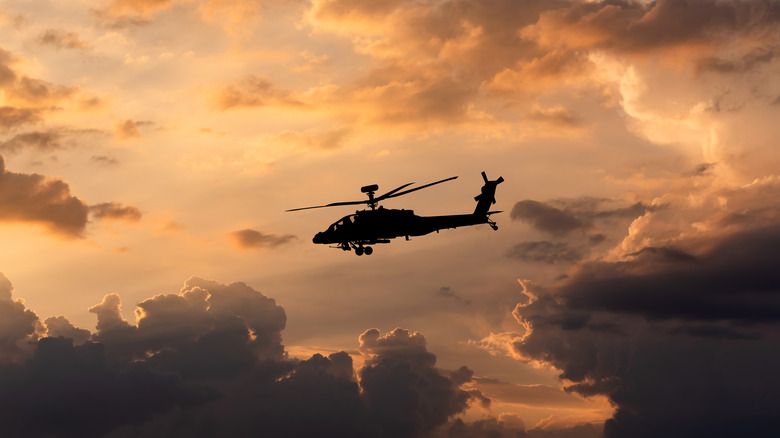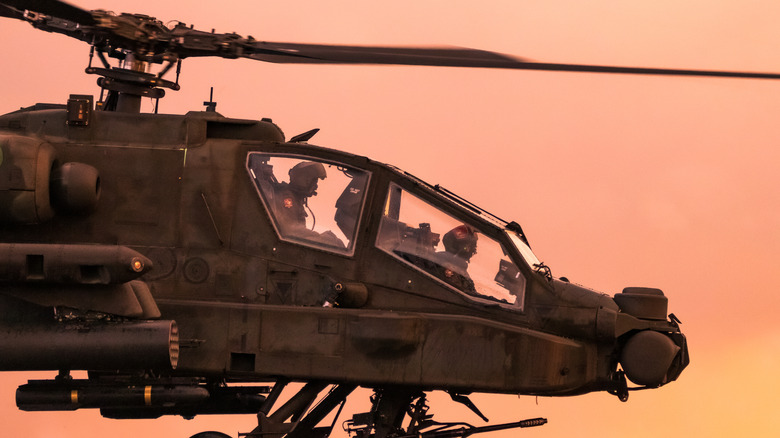What Is The Most-Feared Military Helicopter? (It's Not The Black Hawk)
While the U.S. military has some truly remarkable crafts of war capable of dishing out terror and carnage in equal measure, few can match the military attack helicopter in that effect. Sure, hearing or seeing an A-10 Thunderbolt II's GAU-8/A Avenger 30mm Gatling gun spew out 3,900 rounds a minute from any distance is enough to drain the fighting spirit in many a man, and an F-35 zooming overhead technically spells game over.
However, military helicopters can be more versatile than fighter aircraft while carrying nearly the same firepower but adapt to almost any situation exists? Over the last century, the U.S. has employed several attack helicopters, some of which, like the Bell AH-1 Cobra, count among its best attack helicopters ever used in war.
Among the many helicopters in the service of the United States military, none have sown as much fear as the AH-64 Apache, thanks to its powerful armament, versatility, and advanced targeting system.
A worthy replacement for the AH-1 Cobra
The AH-64 Apache entered service in 1986, replacing the AH-1 Cobra, which many consider the world's first true attack helicopter. The AH-1 itself was heavily evolved from the UH-1 Huey, using several components from the Huey to reduce development time and costs. It was even known as the Huey Cobra in its early days, with the first generation coming with armaments such as the M65 TOW anti-tank missile system and 2.75-inch folding-fin aerial rockets.
The Cobra made a name for itself in Vietnam as a force to be reckoned with. It should come as no surprise, then, that the U.S. Military took everything it was into consideration when coming up with what the AH-64 was supposed to be. The military sought an attack helicopter with better range, a higher flight ceiling, and improved weapons and armor capabilities compared to the Cobra. In the early 1970s, it issued a Request for Proposals (RFP) for the aircraft, known as the Advanced Attack Helicopter (AAH) program.
Several aircraft manufacturers submitted their proposals for the project, including Lockheed Martin and Hughes, as well as Sikorsky and Bell. In the end, the military chose Hughes and Bell, and by the mid-1970s, two flying prototypes, one of which would become the AH-64, the YAH-64A (developed by Hughes) and the YAH-63A (developed by Bell), were complete. The military subjected the two crafts to further tests, after which the Hughes variant was selected.
Armor, armaments, and advanced targeting systems
The AH-64 is a two-crew attack helicopter that is not only incredibly fast but also one of the few helicopters capable of firing air-to-air missiles. Besides the air-to-air Stinger missiles, it also comes with a 30 mm chain gun with 1,200 rounds, firing at a rate of 600-650 rounds per minute, and carries 16 Hellfire missiles and 76 2.75-inch rockets. The aircraft can climb over 2,800 feet per minute with a top speed of around 186 miles per hour, making it a formidable presence in the sky.
The AH-64 also boasts impressive armor protection and features such as hostile fire indicators and real-time geolocation of threats, which enhance its survivability. Additionally, it features advanced targeting systems that enable it to scan the battlefield and engage its targets accordingly. In the U.S. Military, AH-64s are found with the Army, where they've served in every major military conflict since their introduction in the 1980s.
To date, upward of 2,400 have been built and can be found in numerous countries, including Japan, Australia, Egypt, Saudi Arabia, the UAE, Israel, Greece, the Netherlands, Qatar, Singapore, India, Korea, Kuwait, the United Kingdom, Morocco, and Indonesia.


